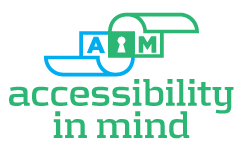| Accessibility challenge | Disability type(s) | Solution(s) |
|---|---|---|
| Only true headings and lists will convey semantic meaning to a screen reader user. | Blind |
|
| Images must include an alternative description (alt text) to be meaningful to a screen reader user. | Blind |
|
| Complex charts or tables may not contain proper headings, captions or summaries. | Blind |
|
| Poor color contrast, especially in images and charts. | Color blind, Low vision |
|
| Documents with forms that can be filled in on the screen (checkboxes, text fields, etc.) may not be accessible to screen reader users and may not export correctly to other formats. | Blind, all users |
|
| A page may be read out of order by a screen reader. That is, the reading order and the visual order may be different. | Blind |
|
| Scanned PDF files that are not converted to plain text will not be accessible to screen reader users. | Blind |
|
| A PDF reader program must be used to view PDF files. | All users |
|
| Embedded multimedia may be inaccessible, especially if it is not captioned. | Deaf, Blind |
|
| Scanned PDF files converted to real text can have numerous misspellings that may only be apparent to screen reader users. | Blind |
|
| Headers, footers, logos and other content that meant to be ignored may be read by a screen reader on every page. | Blind |
|
Overcoming Accessibility Challenges for Section 508 Compliance
This is based on an article from the National Center on Disability and Access to Education, describing how properly structured / tagged PDF documents can be made accessible and in compliance with Section 508, and the disability types that can be aided by the process:
FAQ: What is the price per page to remediate a document and make it compliant with Section 508?
Every document is unique, and every client has different requirements, so there is no set cost per page to make a document compliant with Section 508 of the ADA. A 10 page document with numerous tables, charts and graphics may require more remediation than a 200 page mostly text document. Many of our clients have special compliance specifications– we are prepared to handle the most stringent requirements.
A typical job for a health insurance organization with 80-100 documents totaling 2000-3000 pages may be as low as $2 a page, depending on the state of the documents. A typical single document remediation of 20 pages may cost between $2-20 per page.
We never quarrel with those who sell for less, as they know what their service is worth. EDCS remediated documents are guaranteed accessible, not merely error-free according to an automatic check.
We will be glad to evaluate your documents, give you a report on their compliance needs and a firm bid including turnaround time, please contact us for more information.
Tips for Document Creators: Alternate Text
Using best practices for creating accessible documents makes Section 508 compliance much less costly. Adding alternative text for images is the imperative, and needs to be done correctly:
By following the basic principles outlined here, web developers can make their web content more accessible to individuals with disabilities.
- Alternative text may be provided in the alt attribute or in the surrounding context of the image, but not both.
- Every image must have an alt attribute.
- Alternative text should:
- presents the CONTENT and FUNCTION of the image.
- be succinct.
- Alternative text should not:
- be redundant (be the same as adjacent or body text).
- use the phrases “image of…” or “graphic of…”.
- Appropriate alternative text depends heavily on the image’s context.
- Alt text of a functional image (e.g., an image within a link) should describe the function as well as the content.
- Decorative images still need an alt attribute, but it should be null (alt=”").
An indepth article on proper usage of the image alt tag can be found at the WebAim web site.
Find out more about Section 508 document compliance here: http://508compliantdocumentconversion.com/
Accessible Documents Benefit All Users; Not Just for “Screen Readers”
It is a common myth that making your documents accessible and compliant with Section 508 is only for the benefit of users with disabilities. In fact, compliant documents benefit all users. Consider these facts:
- More and more content on websites comes in PDF form.
- Structured, tagged PDFs are more accessible to search engines. Google, etc., is “blind”, in a sense; it sees an untagged document as a blank document. On the other hand, a tagged document is optimized for searching. This makes it easy for search engines and USERS to find content in your documents.
- More and more users access content from tablets and mobile devices.
- Structured, tagged PDFs are accessible on mobile devices using “page reflow”, available for mobile applications, so your content is readable on smart-phones, e-book readers, tablets, etc., virtually any Internet-connected reading device.
Subscribe to:
Posts (Atom)
The Truth About the Refresh: WCAG 2.0 It I!
In January 2017, the U.S. Access Board issued the Information and Communication Technology (ICT) Standards and Guidelines, updating its ex...

-
Here's a nice overview showing some real-world examples of what it takes to make documents accessible and compliant with Section 508: ...
-
Section 508 Watchers out there, here's a good one: Just got the print edition of "Medicare & You" in the mail, thought I...
-
It is a common myth that making your documents accessible and compliant with Section 508 is only for the benefit of users with disabilitie...

